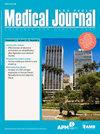Omics profile of iPSC-derived astrocytes from Progressive Supranuclear Palsy (PSP) patients.
IF 1.3
4区 医学
Q2 MEDICINE, GENERAL & INTERNAL
引用次数: 0
Abstract
INTRODUCTION Progressive Supranuclear Palsy (PSP) is a neurodegenerative tauopathy and, to date, the pathophysiological mechanisms in PSP that lead to Tau hyperphosphorylation and neurodegeneration are not clear. In some brain areas, Tau pathology in glial cells appears to precede Tau aggregation in neurons. The development of a model using astrocyte cell lines derived from patients has the potential to identify molecules and pathways that contribute to early events of neurodegeneration. We developed a model of induced pluripotent stem cells (iPSC)-derived astrocytes to investigate the pathophysiology of PSP, particularly early events that might contribute to Tau hyperphosphorylation, applying omics approach to detect differentially expressed genes, metabolites, and proteins, including those from the secretome. METHODS Skin fibroblasts from PSP patients (without MAPT mutations) and controls were reprogrammed to iPSCs, further differentiated into neuroprogenitor cells (NPCs) and astrocytes. In the 5th passage, astrocytes were harvested for total RNA sequencing. Intracellular and secreted proteins were processed for proteomics experiments. Metabolomics profiling was obtained from supernatants only. RESULTS We identified hundreds of differentially expressed genes. The main networks were related to cell cycle re-activation in PSP. Several proteins were found exclusively secreted by the PSP group. The cellular processes related to the cell cycle and mitotic proteins, TriC/CCT pathway, and redox signaling were enriched in the secretome of PSP. Moreover, we found distinct sets of metabolites between PSP and controls. CONCLUSION Our iPSC-derived astrocyte model can provide distinct molecular signatures for PSP patients and it is useful to elucidate the initial stages of PSP pathogenesis.进行性核上性麻痹(PSP)患者ipsc衍生星形细胞的组学分析。
进行性核上性麻痹(PSP)是一种神经退行性Tau病,迄今为止,PSP中导致Tau过度磷酸化和神经变性的病理生理机制尚不清楚。在某些脑区,神经胶质细胞中的Tau病理似乎先于神经元中的Tau聚集。利用来自患者的星形胶质细胞系建立模型,有可能识别导致神经退行性疾病早期事件的分子和途径。我们建立了一个诱导多能干细胞(iPSC)衍生的星形胶质细胞模型,以研究PSP的病理生理学,特别是可能导致Tau过度磷酸化的早期事件,并应用组学方法检测差异表达的基因、代谢物和蛋白质,包括来自分泌组的基因。方法将未发生MAPT突变的PSP患者和对照组皮肤成纤维细胞重编程为iPSCs,进一步分化为神经祖细胞(npc)和星形胶质细胞。在第5代,收集星形胶质细胞进行总RNA测序。处理细胞内和分泌蛋白进行蛋白质组学实验。仅从上清液中获得代谢组学分析。结果鉴定出数百个差异表达基因。主要网络与PSP的细胞周期再激活有关。发现PSP组只分泌几种蛋白质。与细胞周期和有丝分裂蛋白相关的细胞过程、TriC/CCT通路和氧化还原信号在PSP分泌组中富集。此外,我们在PSP和对照组之间发现了不同的代谢物。结论ipsc衍生的星形胶质细胞模型可为PSP患者提供清晰的分子特征,有助于阐明PSP发病的初始阶段。
本文章由计算机程序翻译,如有差异,请以英文原文为准。
求助全文
约1分钟内获得全文
求助全文
来源期刊

Sao Paulo Medical Journal
医学-医学:内科
CiteScore
2.20
自引率
7.10%
发文量
210
审稿时长
6-12 weeks
期刊介绍:
Published bimonthly by the Associação Paulista de Medicina, the journal accepts articles in the fields of clinical health science (internal medicine, gynecology and obstetrics, mental health, surgery, pediatrics and public health). Articles will be accepted in the form of original articles (clinical trials, cohort, case-control, prevalence, incidence, accuracy and cost-effectiveness studies and systematic reviews with or without meta-analysis), narrative reviews of the literature, case reports, short communications and letters to the editor. Papers with a commercial objective will not be accepted.
 求助内容:
求助内容: 应助结果提醒方式:
应助结果提醒方式:


